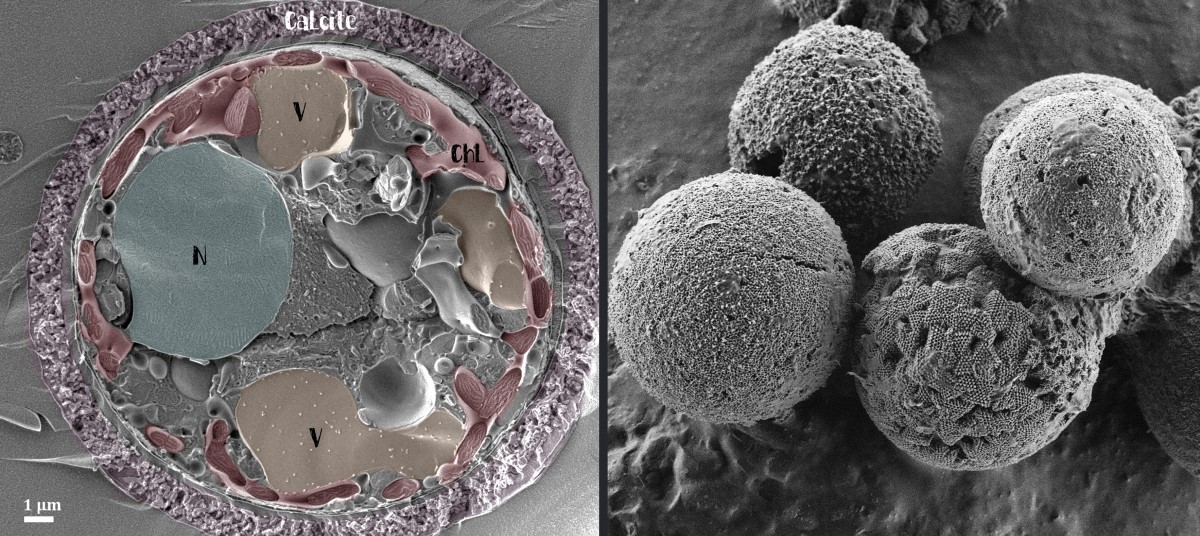
Biomineralization is a fascinating biological process that occurs in a wide range of organisms, from microscopic bacteria to large marine creatures. It involves the formation of minerals within living organisms, leading to the creation of hard structures such as shells, bones, and teeth. While biomineralization is a well-studied field, there are still many surprising aspects that continue to captivate researchers. In this article, we will delve into 18 intriguing facts about biomineralization that highlight the complexity and beauty of this natural phenomenon. From the ability of some organisms to create materials stronger than steel to the role of biofilms in mineral formation, these facts will challenge your understanding of the natural world. So, let’s dive in and explore the remarkable world of biomineralization!
Key Takeaways:
- Biomineralization is a cool natural process where living things make strong and unique structures using minerals. It’s like nature’s own construction project, happening in everything from tiny bacteria to big ocean creatures!
- Biomineralization isn’t just about making shells and bones. It’s also about colorful butterfly wings, waste management, and even clues about the origins of life. It’s like a secret superpower hidden in living things!
Biomineralization is a natural process.
Biomineralization is a fascinating natural process that occurs in various living organisms, from microscopic bacteria to large marine animals. It involves the formation of inorganic minerals within organic matrices, resulting in the creation of complex and unique structures.
Biomineralization plays a crucial role in skeletal development.
One of the key functions of biomineralization is the formation of skeletal structures in organisms. It helps in providing support, protection, and locomotion, allowing organisms to thrive in their environments. For example, the shells of mollusks and the bones of vertebrates are formed through this process.
Biominerals exhibit extraordinary properties.
Biominerals often possess remarkable properties, such as high strength, toughness, and the ability to self-repair. These unique qualities are a result of the hierarchical structure of biominerals, which are formed through controlled growth and assembly processes.
Biomineralization is not limited to terrestrial organisms.
While we commonly associate biomineralization with land-dwelling creatures, it also occurs in marine organisms. Corals, for instance, build their intricate reefs through the process of biomineralization, creating habitats for numerous marine species.
Biomineralization can be found in ancient fossils.
Scientists have discovered evidence of biomineralization in ancient fossils, indicating that this process has been occurring for millions of years. The preservation of minerals in fossils has provided valuable insights into the evolution of life on Earth.
Biomineralization can be influenced by environmental factors.
The rate and nature of biomineralization can be influenced by environmental factors such as temperature, pH levels, and the availability of minerals. Changes in these factors can impact the formation and composition of biominerals.
Biomineralization has practical applications.
The study of biomineralization has led to various practical applications in fields such as material science and medicine. Researchers are exploring how the knowledge of biomineralization can be applied to develop new materials with enhanced properties and to improve medical treatments.
Biomineralization is a complex biological process.
The process of biomineralization involves a complex interplay of biological, chemical, and physical factors. Organisms have evolved sophisticated mechanisms to control the growth, shape, and composition of biominerals, resulting in a wide range of intricate structures.
Biominerals serve as records of environmental conditions.
Biominerals can act as archives, preserving information about the environmental conditions in which they were formed. Scientists can analyze the composition and isotopic signatures of biominerals to gain insights into past climates and environmental changes.
Biomineralization can occur in unexpected organisms.
Biomineralization is not limited to well-known organisms like shells or bones. Surprisingly, even bacteria and certain plants have been found to possess the ability to biomineralize, further expanding the scope of this fascinating process.
Biomineralization is critical for structural coloration.
The vibrant colors observed in some organisms, such as butterflies and peacock feathers, are often a result of structural coloration achieved through biomineralization. The unique arrangement of biominerals creates optical effects that produce vivid hues.
Biomineralization has inspired advancements in biomimetics.
The study of biomineralization has inspired scientists and engineers to develop innovative materials and technologies through biomimetics. By mimicking the principles of biomineralization, they aim to create synthetic materials with enhanced properties and functionalities.
Biomineralization occurs in teeth and enamel.
The formation of teeth and enamel in vertebrates involves biomineralization. The precise control over the formation and arrangement of biominerals in teeth contributes to their strength and durability.
Biomineralization can result in diverse crystal structures.
Biominerals can exhibit a wide range of crystal structures, including complex and unconventional ones that are not typically found in non-biological mineral formations. These unique structures contribute to the exceptional properties of biominerals.
Biomineralization is a subject of scientific research.
Scientists from diverse disciplines, including biology, chemistry, and materials science, are actively studying biomineralization to unravel its mysteries and expand our understanding of this complex process.
Biomineralization can be influenced by genetic factors.
The genetic makeup of an organism plays a crucial role in governing the process of biomineralization. Variations in genes can result in differences in the structure, composition, and properties of biominerals.
Biomineralization aids in waste management.
Biomineralization processes are being explored as potential solutions for waste management. Certain microorganisms have the ability to utilize waste materials and convert them into useful biomineral products, reducing environmental impact.
Biomineralization provides insights into the origins of life.
Studying biomineralization and the formation of complex structures in living organisms offers valuable insights into the origins of life itself. It sheds light on the processes that may have played a crucial role in the emergence and evolution of life on Earth and beyond.
Conclusion
Biomineralization is a fascinating natural process that occurs in various living organisms, leading to the formation of mineralized structures. Throughout this article, we have explored 18 surprising facts about biomineralization, delving into the intricate mechanisms and outcomes of this phenomenon.From the ability of certain organisms to produce incredibly strong and resilient materials, to the intriguing relationship between biomineralization and evolution, we have gained a deeper understanding of the importance and complexity of this biological process. By harnessing the power of biomineralization, scientists have even developed innovative applications, ranging from advanced biomaterials to environmental remediation techniques.As we continue to uncover more about biomineralization, we can expect to make significant strides in various fields, including medicine, technology, and materials science. The exploration of this natural process holds tremendous potential for enhancing our knowledge of the natural world and finding sustainable solutions to some of the challenges we face today.
FAQs
Q: What is biomineralization?
A: Biomineralization is the process by which living organisms produce mineralized structures, such as shells, bones, and teeth, through biological means.
Q: How do organisms control the mineralization process?
A: Organisms use a variety of strategies to control biomineralization, including the secretion of proteins and minerals, as well as manipulation of environmental factors such as pH and temperature.
Q: Are all mineralized structures formed through biomineralization?
A: No, some mineralized structures can form abiotically through non-biological processes. Biomineralization refers specifically to the formation of mineralized structures by living organisms.
Q: What are some examples of biomineralized structures?
A: Examples include seashells, coral reefs, teeth, bone, and antlers, among others. Different organisms produce a wide array of mineralized structures depending on their biological needs and environmental conditions.
Q: Can biomineralization have any applications in technology?
A: Yes, the study of biomineralization has led to the development of bioinspired materials with enhanced mechanical properties. Researchers are exploring these materials for applications in fields such as aerospace, construction, and medicine.
Q: How does biomineralization contribute to evolution?
A: Biomineralization has played a crucial role in the evolution of organisms. The ability to produce mineralized structures has provided organisms with enhanced protection, structural support, and physiological advantages, leading to their survival and diversification over time.
Biomineralization is a fascinating natural process that creates extraordinary structures. If you enjoyed learning about this topic, consider exploring related fields. Delve into the captivating world of biochemistry, where chemical reactions power life. Discover how environmental science helps protect our planet's biodiversity. Finally, understand the formation and prevention of mineral deposition in the human body.
Was this page helpful?
Our commitment to delivering trustworthy and engaging content is at the heart of what we do. Each fact on our site is contributed by real users like you, bringing a wealth of diverse insights and information. To ensure the highest standards of accuracy and reliability, our dedicated editors meticulously review each submission. This process guarantees that the facts we share are not only fascinating but also credible. Trust in our commitment to quality and authenticity as you explore and learn with us.


